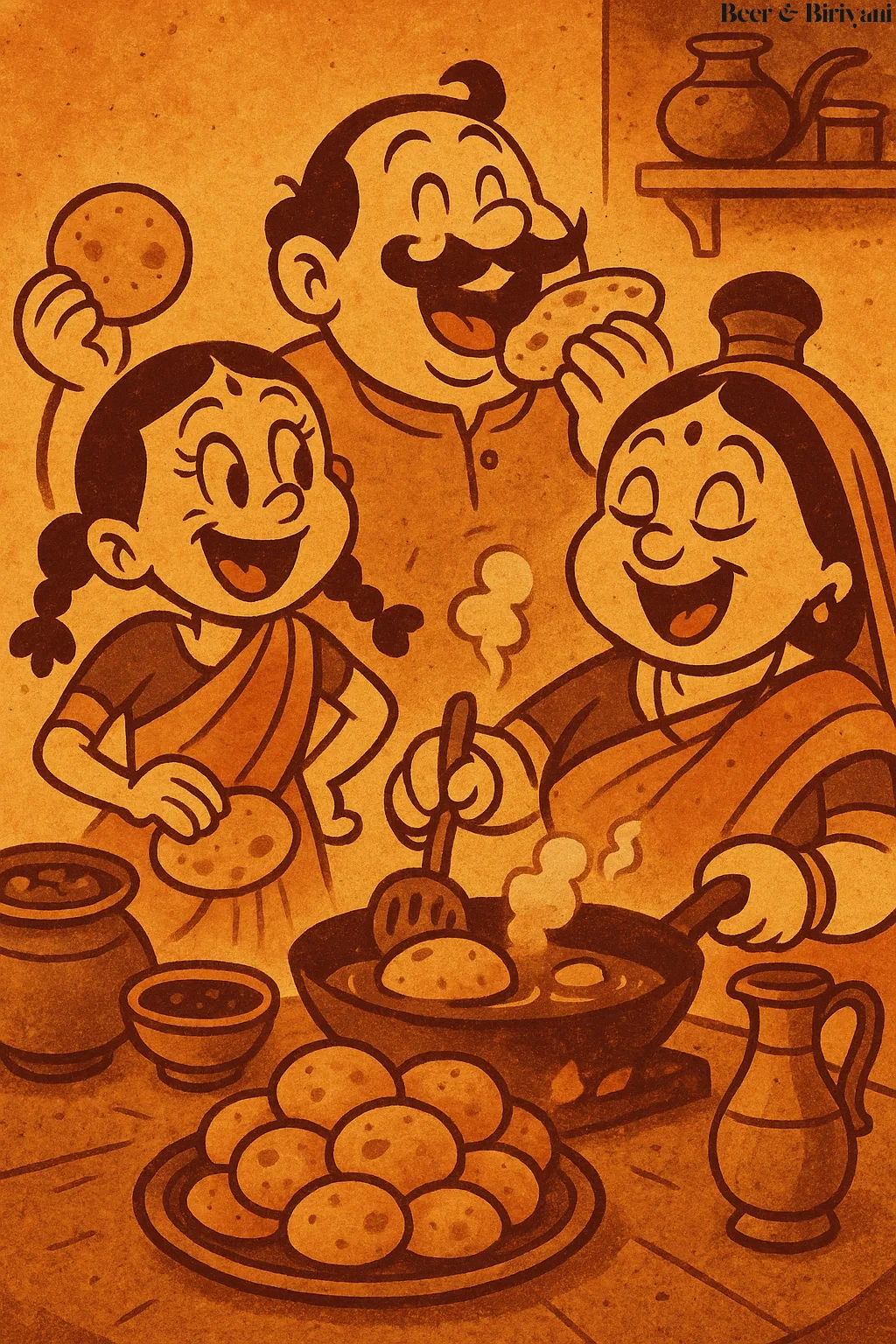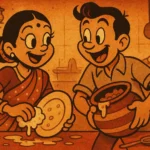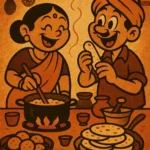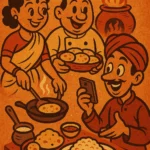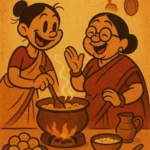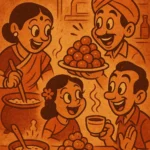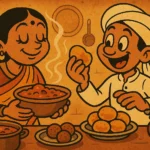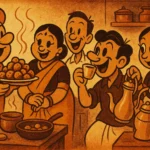Fast forward to now, and I find myself in a completely different world. Austin, Texas, is a far cry from Mumbai, both geographically and culturally. But no matter where I am, the love for food never fades. And when you live away from home, there’s a deep craving to recreate that comfort food—those dishes that carry the essence of home, warmth, and family. And so, my WhatsApp cooking lessons began.
Technology Meets Tradition
It started out with a simple text: “How do I make your famous aloo paratha?” From that humble question, a full-blown culinary apprenticeship began—via text, voice messages, and video calls. There were no fancy gadgets involved, just a phone, a kitchen, and a mother determined to ensure her son didn’t forget the way to make the perfect dough.
Mom’s cooking instructions over WhatsApp have a special rhythm. First comes the voice note—“Add a pinch of hing (asafoetida), just a pinch!” Then comes the picture of the masala—”Is this the right kind of red chili powder?” Of course, no picture is ever as good as being there in person, but you can feel her presence through those little screenshots. And it’s always the same advice—“Trust your gut, just like I showed you.” That’s how I learned the magic of Indian cooking: it’s not about exact measurements; it’s about feeling, instinct, and the legacy of recipes passed down through generations.
There’s something uniquely intimate about cooking across time zones, with flour-covered fingers and flour-covered phones. The phone gets smudged with flour as I make chapatis, and the screen becomes a map of memories as I trace the recipes I’ve known all my life. My mom, from thousands of miles away, is guiding me every step of the way. And somehow, the distance seems smaller every time we share a laugh over the missteps (yes, sometimes the dough is too sticky, and no, I didn’t add enough salt to the sabzi).
The Globalization of Indian Cuisine
Indian cuisine has had a profound impact on food culture around the world. But there’s something so special about experiencing it the way we’ve always done—by hand, by heart, and with a lot of patience. Yes, I’ve seen Indian food get “Instagrammed” and turned into fusion dishes, but nothing compares to the authenticity of those home-cooked meals. The curry that doesn’t need to look pretty but tastes like nostalgia in a bowl. The dal that takes hours to cook but feels like home in every spoonful.
When I moved to the U.S., it was clear that a lot of the Indian food I loved was simplified to fit a more American palate—paneer butter masala was the first to go on the menu at every restaurant. But something was missing. What was missing wasn’t the spices, but the storytelling. The aroma of ghee frying onions wasn’t just the scent of food; it was the smell of years of tradition being passed down. That’s the beauty of cooking like my mom does—it’s about connection, not just cuisine. Indian food is meant to bring people together, and even from a distance, we’re still sharing our kitchen and culture.
Now, every time I sit down to eat the meal that my mom helped me recreate via WhatsApp, it’s not just food. It’s an experience. It’s the warmth of home, the comfort of family, and the joy of sharing a meal, even if we’re separated by thousands of miles. And that’s the beauty of technology—it can bridge the distance, but it’s the love and the recipes passed down that make it truly meaningful.
The Power of a Recipe
So, if you’re ever feeling nostalgic for a dish from home, I suggest you pick up your phone. Text your mom, or anyone you learned to cook from, and ask for their favorite recipe. Whether it’s a savory biryani or a sweet, syrupy gulab jamun, there’s something magical about the stories they’ll tell you along with the ingredients. Because cooking isn’t just about the food—it’s about preserving memories, honoring traditions, and staying connected, no matter how far apart we are.
And the next time I make that paratha or pour the warm ghee over my dal, I’ll be grateful not just for the food, but for the connection. And no matter how many miles away she is, my mom will always be just a voice message away, guiding me through the recipe, just as she always has. The kitchen will always be our place—where time and distance fade, and love always fills the air.
Born in Mumbai, now stir-frying feelings in Texas. Writes about food, memory, and the messy magic in between — mostly to stay hungry, sometimes just to stay sane.

